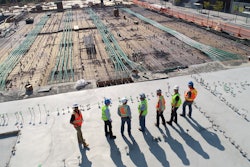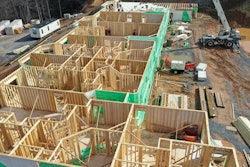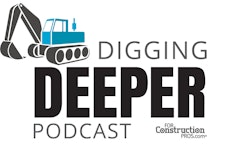
Despite some high points (like the infrastructure bill), 2021 ended on a sour note as COVID-19 cases once again soared and supply chain disruptions continued to grow, causing construction costs to climb even as the industry saw seasonal slowing. So, what more could possibly lie ahead?
To get a clearer picture, we asked several leading construction economists to weigh in with their outlooks for the coming months (starting on page 20). They examined the general state of the industry, plus looked closely at the road building sector — a likely source of sizable gains in the latter half of 2022 and for several years to follow as federal infrastructure dollars start to flow.
You’ll see that their views are decidedly mixed based on a number of risk factors the industry is facing. How your company fares in 2022 will depend on how you’re able to manage risks such as how to find/retain skilled labor, address cost creep for construction inputs, access equipment needed to complete projects and more.
Avoid the Domino Effect
Construction business owners have plenty of experience managing risks. Yet, the complexities of the construction process and the threats to project profits have expanded in recent years, and even more so since the start of the pandemic. From COVID-related safety concerns to cyber threats, there seem to be more risks lurking around every corner.
Fred Guitton, chief revenue officer at construction management software provider RedTeam, equates a project site to a “giant set of dominoes — a single part goes wrong and a lot of things can go sideways.” To prevent this chain reaction, he stresses the need to identify and manage controllable risks on a project before it starts, while putting a plan in place to address unforeseen/uncontrollable risks, such as weather or a jobsite accident.
“As a commercial/general contractor, people think that you’re someone that builds things, but in reality, most of what you do is actually managing risk, managing contracts, managing information,” says Guitton. “It’s making sure that six months down the road if a dispute arises that you have all the information well organized, so that you can actually make sure to apply the proper level of accountability to the different partners.”
Transparency throughout a project can help to mitigate risks such as disputes. Cloud-based construction management software, with its ability to share information between parties, can help. “Creating that level of transparency, by default, creates accountability… When the information is elevated and transparent, it automatically creates a much higher level of harmony on the project,” says Guitton.
Create a Safety Culture
Yet, technology is just another tool in your risk management arsenal. Establishing a culture focused on addressing jobsite risks, and safety in particular, is the first essential step. “Anytime you can complement your existing program with technology that can help you address a business challenge, it’s definitely worth exploring,” says Mark Nowakowski, field director at Travelers. “But these systems are never going to be a replacement to that overall program.
“Establishing an effective safety culture in a company is going to always start with top management,” he continues. “And it’s going to remain critical for any contractor to help keep employees safe and prevent losses.”





















